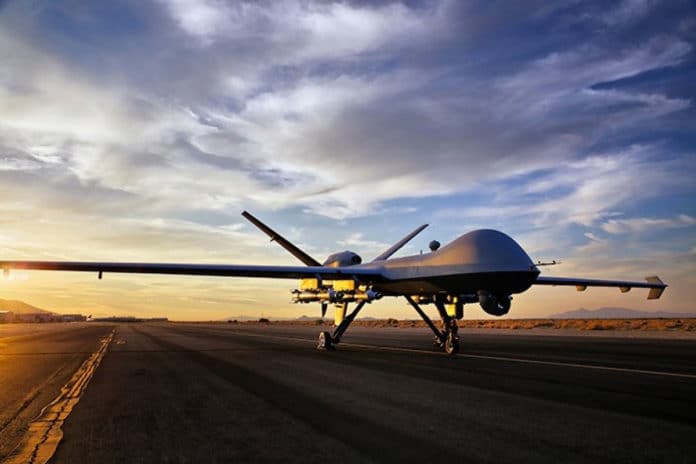The US Air Force (USAF) will award the first delivery order of planned MQ-9 Multi-Domain Operation (M2DO) aircraft – which will include several new upgrades from the previous production builds – to General Atomics Aeronautical Systems (GA-ASI) this month. The aircraft will be outfitted with several fleet enhancement capabilities aimed at increasing MQ-9s effectiveness against near-peer adversary threats.
The MQ-9 Reaper is an unmanned aircraft with intelligence, surveillance, reconnaissance, and strike capability, traditionally used for Counter-Violent Extremist Organization (C-VEO) combat operations. The MQ-9 is demonstrating that it is still a relevant platform as it supports new missions and is now set to receive a suite of new upgrades as its mission shifts from anti-extremist operations.
The increased capabilities will be installed in both new Reapers and those already in service. This will allow the Air Force to leverage current fleet numbers to meet future warfighter requirements through the service life of the aircraft.
The Air Force Life Cycle Management Center’s MQ-9 Program Office is already completing initial fleet retrofits that will mitigate potential jamming to the platform. This is the first retrofit of many, as MQ-9 M2DO configured aircraft will receive additional closely-held capabilities that will enable Command and Control mission assurance and resiliency while the aircraft is airborne.
The program is also increasing the electronic power and developing a new open architecture for the platform. These upgrades will allow the Air Force to rapidly integrate new capabilities in response to emerging threats identified by Combatant Commanders. It also plans to upgrade the MQ-9’s electro-optical/infrared sensor and expand the types of weapons the platform will be able to carry.
With these smart investments, the Air Force projects that the MQ-9 Reaper will remain operationally viable for worldwide operations through the end of the platform’s projected service life of 2035. In conjunction, the Air Force will continue to evaluate options to find a more viable solution in the future.
